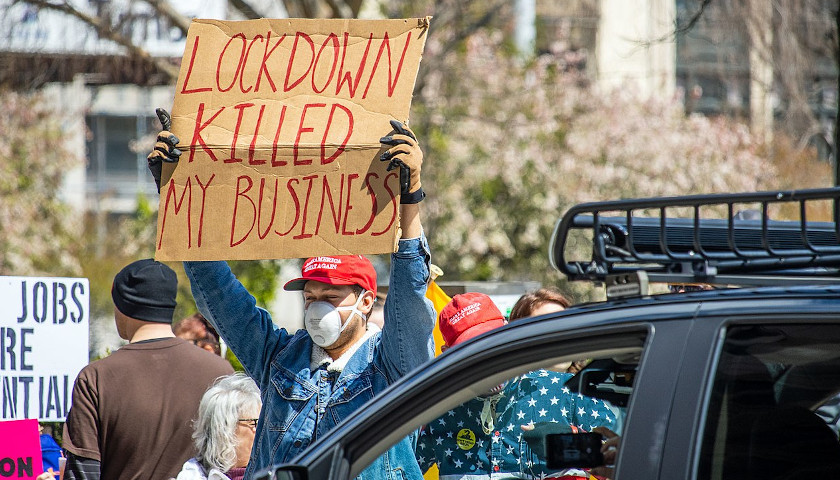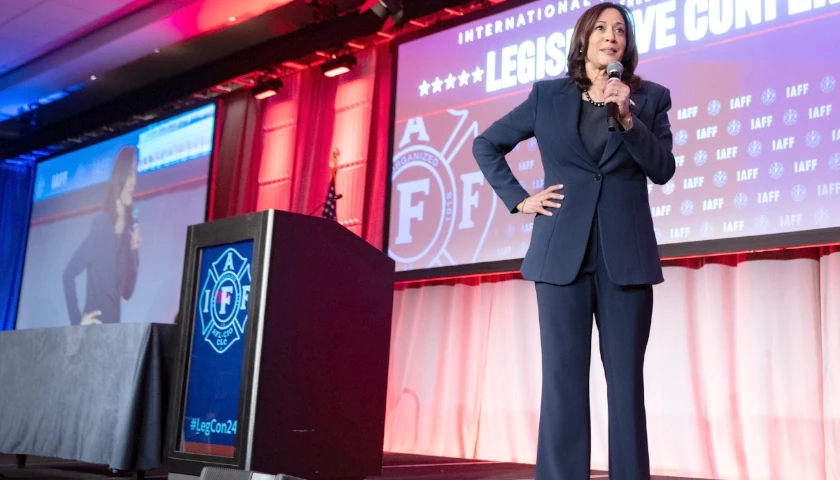by Pedro Gonzalez
It was Monday morning on March 10, 2019, when Ethiopian Airlines Flight 302 lurched away from the gate, rolled to a sprint, and peeled its wheels off the runway for the last time. Aboard, 157 souls including eight Americans and one veteran on vacation doing missionary work, were flying.
Six minutes after takeoff, Flight 302 plunged back to earth, trailing white smoke across the sky until reaching its terminus near Bishoftu, Ethiopia. All aboard perished when the Boeing 737 Max 8 aircraft screamed into the ground at nearly 700 miles per hour, leaving a massive crater with wreckage driven up to 30 feet deep into the soil.
That tragedy put visa worker programs in the spotlight after a report in Bloomberg revealed Boeing had cut costs by outsourcing 737 Max production to low-paid foreign subcontractors, coders, and software engineers.
Mark Rabin, a former Boeing software engineer, said the company’s decision to outsource “was controversial because it was far less efficient than Boeing engineers just writing the code.” It often was the case, he said, that “it took many rounds going back and forth because the code was not done correctly.”
Boeing denies outsourcing played any role in the faulty flight-control software that forced the plane into a fatal nosedive.
Though the flames that consumed Flight 302 have long since flickered out, the economic crisis in the wake of the coronavirus pandemic has reignited the debate about outsourcing and visa worker programs.
Over the weekend, 30 college student organizations sent a letter to President Donald Trump: “Mr. President, in addition to ending the Bush-Obama [Optional Practical Training] program, we strongly urge you to suspend the H-1B program.”
These college students are correct to be concerned and they have an interest in paying attention to what the administration does next. These programs now pose an acute threat to their job prospects and the wages of our best and brightest, especially those in science, technology, engineering, and mathematics. As things stand, not only will the class of 2020 enter the worst job market since the Great Depression, it will compete with a government-subsidized labor force of H-1B and OPT workers as well.
Optional Practical Training is a component of the F-1 visa program, which enables foreign nationals to study as full-time students in the United States. As a condition for entry, U.S. Citizenship and Immigration Services asks F-1 students to maintain a residence abroad that they “have no intention of giving up.” In other words, applicants must show their intention to return to their country of origin at the end of their study. But OPT offers a loophole out of this requirement.
F-1 visa holders can apply for 12 months of “temporary” employment through OPT, including those who have graduated and should be on their way home. At the end of that period, foreign nationals in STEM may apply for a 24-month extension.
A tax break of as much as $12,000 incentivizes American businesses in hiring OPT workers over equally, or even more qualified young Americans. Unlike the H-1B, which requires employers to pay workers a wage that corresponds to the occupation and the region where they will be employed, there are no wage requirements for OPT hires.
Many F-1 visa holders who work the full 36 months with OPT will overstay their visas and slip into illegal status. Not to worry, though, because they can pursue a green card by transferring to a dual intent visa, such as the H-1B.
With a few twists and turns, then, foreign nationals who entered the United States as temporary students join the ranks of H-1B visa workers displacing Americans in STEM occupations.
As with OPT, there are underhanded incentives not to hire American, such as loopholes in the program’s wage rules that make it easy for employers to underpay H-1B workers compared to Americans.
The Economic Policy Institute earlier this month found 60 percent of H-1B positions certified by the U.S. Department of Labor are assigned wage levels well below the local median wage for the occupation. This sad fact is an open secret among H-1B employers.
“I know from my experience as a tech CEO that H-1Bs are cheaper than domestic hires,” said Vivek Wadhwa, an advocate for expanding visa worker programs. “Technically, these workers are supposed to be paid a ‘prevailing wage’ but this mechanism is riddled with loopholes.”
It’s common that employers who share Wadhwa’s fondness for outsourcing force Americans to train their lower-paid H-1B replacements as a condition of severance pay. As a result, there are millions of STEM degree holders in the United States who have given up seeking employment in their fields because firms have incentives either not to hire them or not to retain their services in favor of hiring cheaper visa workers. This contributes to the narrative that America has a severe STEM worker shortage, exaggerated to benefit those who exploit outsourcing.
Critical worker shortages would be reflected in substantially higher pay, but wages in many STEM occupations—such as computer science and information technology—remain stagnant. The Wall Street Journal acknowledged a direct connection between the H-1B program and “lower wages and employment for American tech workers” in 2017.
Even if there are fewer workers than jobs, the result is a healthy, tight labor market that encourages employers either to make themselves more attractive by offering better wages or invest in labor-saving technologies. The alternative is the perpetuation of programs that provide companies with cheap labor at the cost of American jobs.
In the aftermath of Flight 302, it came to light that Boeing primarily used the H-1B program to outsource. But OPT hires also may have played a role. Rabin, who was involved in software testing for the 737 Max, remarked about offices across from Seattle’s Boeing Field, where “recent college graduates employed by the Indian software developer HCL Technologies Ltd. occupied several rows of desks” working on code for Boeing. These “temporary workers” made as little as $9 an hour to develop and test software, compared to the $41–$46 hourly wages of a regular hire on a 40-hour workweek.
It shouldn’t take planes falling out of the sky or a pandemic to convince American policymakers of the need not only to make great things in America but also to afford Americans the opportunity to make them. President Trump, as students wrote last week, “can make this right by ending the OPT program and suspending the H-1B program.”
– – –
Pedro Gonzalez is assistant editor of American Greatness and a Mount Vernon Fellow of the Center for American Greatness.
Photo “Lockdown Protest” by Becker1999. CC BY 2.0.






this stuff has been going on for years and years. I have first hand experience with it in the IT arena.The American software developers I supervised often spent more time trying to communicate requirements to foreigner developers than it would have taken them to do the work in the first place. That is totally disregarding the additional time required to test the often less than acceptable products. Multiple iterations of writes/corrections were typically required to get the required results. The corporate shirts thought they were saving money but all they were doing was paying foreigners a reduced rate while holding back the pay of the ones doing the real work.
Unfortunately, the ones yelling the loudest about reopening view employees as widgets. If a few get sick or even die, there are always more widgets available to replace them. This is the time for the reopening Phase where these businesses will whine to federal, state and local governments for protection from liability.
If we go back to work again any time soon, make sure that workers get decent living wage pay, good benefits, and above all–safe working conditions! If returning workers all get sick from too quick a return to work without safety provisions, then who will operate these businesses? What if potential customers either get sick again or become too scared to return to shopping? If too many customers are too scared to go to our stores and restaurants and if too many of our employees become too sick to work, then any efforts at economic recovery will fail.
A healthy revived economy requires healthy and willing workers along with potential customers who feel safe and well enough again to resume their shopping/consumer activities. Most of the rightists who yell the loudest for a return to normalcy have failed to make it safe and practical to do so.